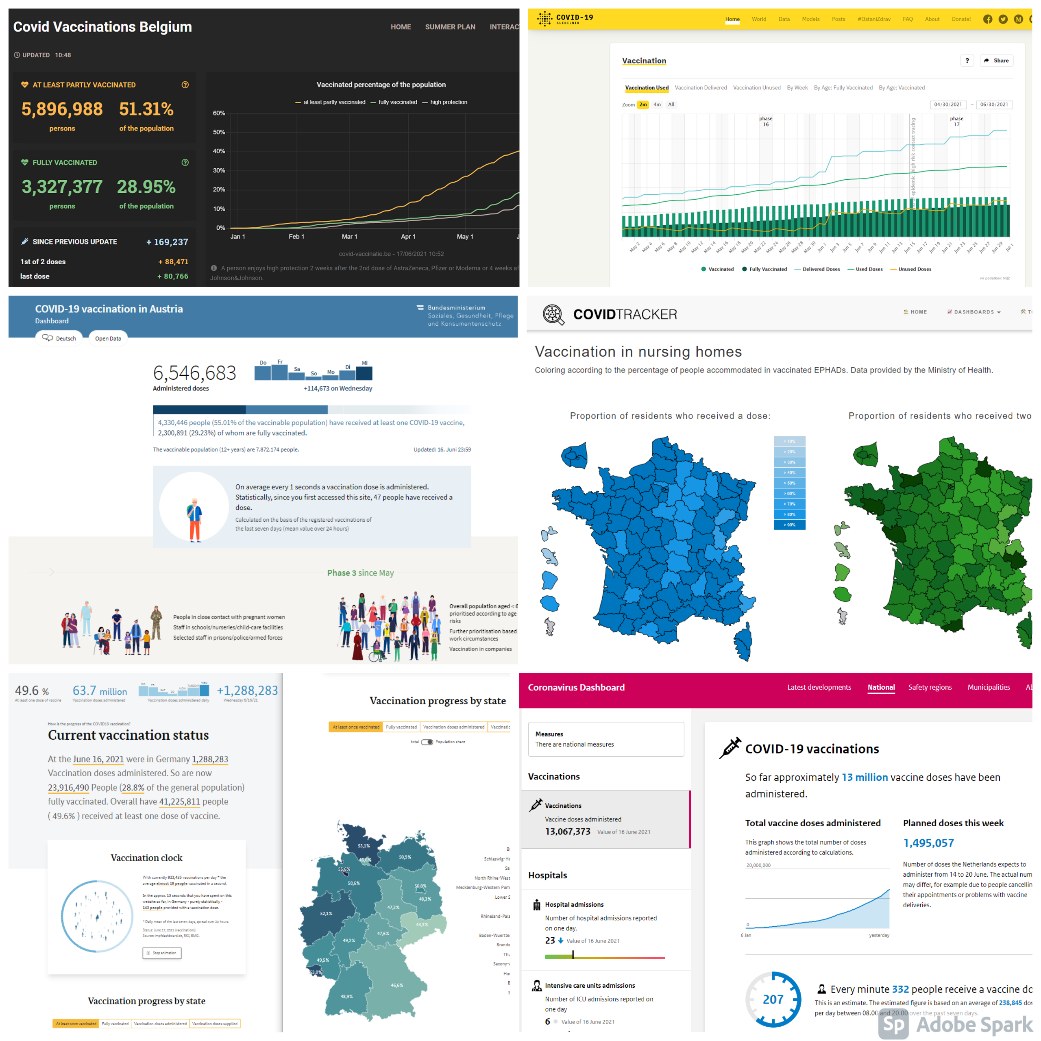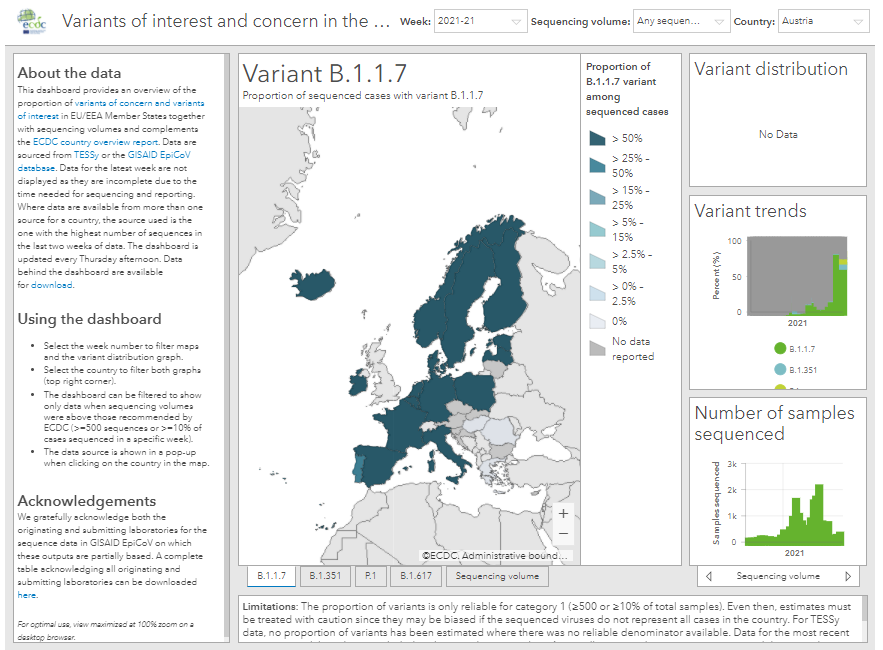Open data supports vaccination strategy across Europe
A Data Story by the data.europa.eu team
The European Union has placed its efforts to respond to COVID-19 pandemic, and vaccines deliveries to EU countries have increased steadily and vaccination is gathering pace. According to last updated data from 5 July 2021, 62.7% of the EU adult population received at least one dose, with 481.6 million doses delivered in the EU.
In a moment where science, solidarity, and cooperation between Member States and European Commission play a mandatory role, data has demonstrated to be the key element to design better responses to the pandemic.
How does open data play an important role in the COVID-19 pandemic?
Policymakers need accurate data to design effective countermeasures to cope with the pandemic. In order to have a rapid response, massive daily volumes of data accessible to everyone is essential to make better decisions in the crisis. Efforts and transparency by public administrations producing massive quantities of data have made it possible to track in real-time the spreading of the virus and respond efficiently. It also helps fight disinformation and better inform citizens.
Furthermore, information empowers citizens to make better decisions and be involved in the ongoing crisis that affect us all. Visualising data and making it accessible to citizens help to achieve this. Interactive dashboards based on open data allow the public to follow the progress of this vaccination programme and better understand the process. The European Centre for Disease Prevention and Control created interactive visualisations on the vaccination campaign thanks to open data updated in a daily basis and visualising the upcoming virus variants.
Visualising the vaccination campaign in Europe
To closely follow the vaccination roll-out within Europe, the European Centre for Prevention and Control (ECDC Disease) recently released a COVID-19 Vaccine Tracker. This interactive dashboard visualises the progress in vaccinating adults (18+) across the EU Member States and European Economic Area (EEA) countries. It maps data on the number of vaccine doses that are being distributed by the various manufacturers of different vaccines, including the first and second doses.

Figure 1: Screenshot of the ECDC COVID-19 Vaccine Tracker
You can find information available in various formats. Additionally, the underlying data is openly available for the public to reuse. ECDC collects the updated data from national and regional authorities in EU/EEA countries through the European Surveillance System (TESSy).
Countries take it upon themselves to know exactly what the status of the roll-out is, and how well the strategy is being implemented. Aside from the ECDC’s pan-European dashboard, several European countries offer national vaccination dashboards with additional insights in their vaccination rates. Although some countries experienced a slow start due to stock issues, the current pace at which European citizens are being vaccinated is increasing rapidly. The data that countries use in their dashboards is openly available and can be found on the respective pages. Examples are found in (list is not exhaustive):
- Austria
- Belgium
- France
- Germany
- The Netherlands
- Slovenia

Figure 2: Examples from European vaccination dashboards (left column: Belgium, Austria, Germany; right column: Slovakia, France, the Netherlands)
ECDC’s virus variants dashboard
Recently, the ECDC also published a dashboard which tracks the SARS-CoV-2 variants currently found in the EU and EEA countries. The dashboard shows the proportion and sequencing volumes of different virus variants that are of concern, namely: the Alpha (B.1.1.7), Beta (B.1.351), Gamma (P.1) and Delta (B.1.617.1, B.1.617.2, B.1.617.3) variants, and their sequencing volumes.

Figure 3: Screenshot of the ECDC SARS-CoV-2 variants Dashboard
The data is obtained from the European Surveillance System (TESSy), similar to the COVID-19 Virus Tracker, and by the GISAID EpiCoV database. The data is being monitored on a weekly basis.
The effect of Europe’s vaccination strategy
The effect of Europe’s currently high vaccination rate is shown by the decreasing number of confirmed COVID-19 cases in European countries. The variants of SARS-CoV-2 must be closely monitored moving forward, but this becomes easier with the dashboards discussed. So far, the vaccines seem to be effective, even to virus variants, hence the Commission proposed that Member States ease some of the restrictions on non-essential travelling from EU countries with a stable epidemiological situation.
The latest news around the European vaccination program is that the EU will offer a Digital COVID-19 Certificate or “COVID-19 passport” for all EU citizens and residents to restore the freedom of travel, from July 1. The Certificate is a one-page document that can be issued in both a paper and digital format to travellers who have been fully vaccinated against COVID-19, those who have recovered recently, or those who were tested negative before their trip. The Certificate is expected to make travelling throughout Europe easier, so that we can all enjoy a safe, and well-deserved holiday starting this summer.
